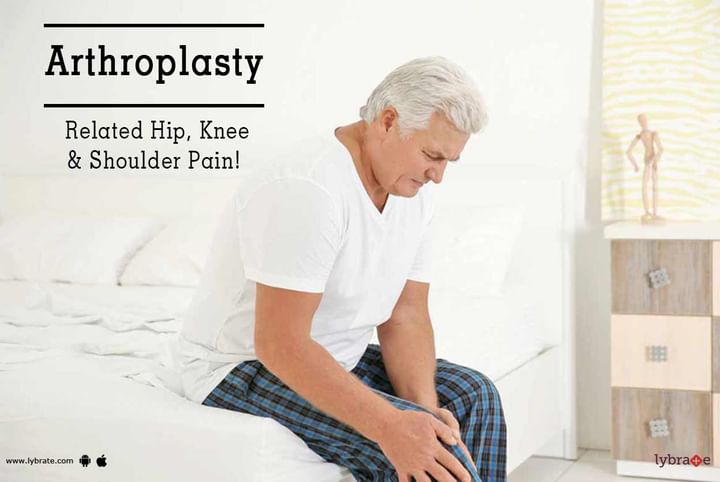Arthroplasty Related Hip, Knee & Shoulder Pain!
Joints are those places where two bones meet, they are ensconced in cartilage and fluid that allows the bones uninterrupted movement. But some problems could lead to joint pain and inflammation. With time, the cartilage starts to wear out and the fluid begins to dry out. Bones rub against one another and this leads to pain. These changes usually crop up once a person turns 40. This condition is called osteoarthritis.
There are three kinds of osteoarthritis-
• Knee arthritis
• Shoulder arthritis
• Hip arthritis
When non-invasive forms of treatment like medication and injections or physiotherapy to reduce the swelling and pain do not work and the pain becomes excruciating, doctors prescribe replacement surgery or arthroplasty.
During this kind of surgery, the damaged cartilage is removed, the ends of the bones are filed and reshaped, and a new metal implant is fitted in.
However, almost 10% of the people who undergo arthroplasty complain of joint pain afterwards.
What are the Causes of Pain in Joints after Arthroplasty?
Here are some reasons why people experience pain after arthroplasty
• The most obvious cause is an infection. Sometimes wounds do not heal like they are supposed to and this causes an accumulation f bacteria which triggers inflammation and pain.
• The bones to which the implant has been attached could have been fractured.
• The implant could have come partially loose. And this could happen anytime after the surgery- in a few days or years later.
• Alignment problems could also be the cause of joint pain. If during the surgery, the implant is not aligned optimally, then every movement of the joint would hurt.
• The joints may take time to acclimate with the new implant. The hip, shoulder or knee joints always perform under immense pressure. Every movement of the human body relies on them. If they do not function in tandem with the new implant, it could turn very painful.
Treatment of Joint Pain after Arthroplasty:
The first step in finding a solution is the diagnosis. Your doctor will perform a physical examination and if required suggest a number of lab tests to understand what is wrong with your joint. If the problem is minor, then pain-relieving medication and new rounds of physiotherapy will suffice. But if the pain is persistent and is being triggered by faulty implant alignment, then you may have to go under the knife again for a revision joint replacement.
Arthroplasty is a surgery that can help people return to their normal lifestyle but it is sometimes fraught with other problems too. If you are in pain, then contact your doctor immediately.



+1.svg)
